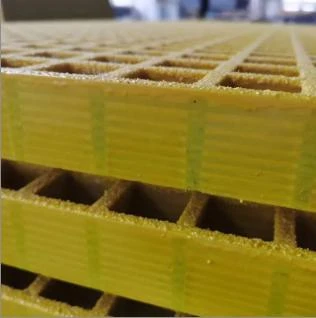loading...
- No. 9, Xingyuan South Street, Dongwaihuan Road, Zaoqiang County, Hengshui, Hebei, China
- admin@zjcomposites.com
- +86 15097380338
- Welcome to visit our website!
Exploring the Benefits and Applications of FRP Round Tubes in Modern Industry
Exploring the Versatility of FRP Round Tubes
Fiber Reinforced Polymer (FRP) round tubes have gained significant popularity in various industries due to their exceptional properties and versatility. Composed of a polymer matrix reinforced with fibers such as glass, carbon, or aramid, these materials present a unique combination of strength, durability, and lightweight characteristics. This article delves into the various applications, benefits, and manufacturing processes associated with FRP round tubes, illustrating why they have become a prominent choice in modern construction and manufacturing.
Properties of FRP Round Tubes
One of the most remarkable features of FRP round tubes is their high strength-to-weight ratio. Compared to traditional materials such as steel or aluminum, FRP tubes weigh significantly less while offering comparable or even superior strength. This makes them an ideal choice for applications where reducing weight is crucial, such as in aerospace, automotive, and marine industries.
Moreover, FRP materials are inherently resistant to corrosion, making them suitable for harsh environmental conditions. They do not rust or corrode like metals, which is particularly advantageous in chemical processing, marine applications, and other industries where exposure to corrosive agents is prevalent. Additionally, FRP round tubes are non-conductive, providing electrical insulation that enhances safety in various applications.
Applications of FRP Round Tubes
The versatility of FRP round tubes allows them to be utilized across multiple sectors. In the construction industry, these tubes are often used as structural components in building frameworks, bridges, and scaffolding. Their lightweight nature simplifies transportation and installation, while their strength and durability ensure long-lasting performance.
In the automotive industry, FRP round tubes are increasingly used in the production of lightweight vehicle components, contributing to improved fuel efficiency and performance. The aerospace sector also benefits from FRP materials, which are used in aircraft structures and components to reduce weight and enhance overall efficiency.
frp round tube

Marine applications leverage the corrosion resistance of FRP round tubes, making them suitable for boat and ship construction, as well as for piping systems in oil rigs and marine environments. Their ability to withstand harsh conditions ensures reliability and longevity in these applications.
Manufacturing Processes
The manufacturing process of FRP round tubes involves several techniques, including pultrusion, filament winding, and resin transfer molding. Pultrusion is a continuous manufacturing process that ensures uniformity and consistency in the production of FRP profiles. In this process, fiberglass strands are impregnated with resin and then pulled through a shaped die to form the desired tube shape.
Filament winding, on the other hand, involves wrapping continuous filaments around a rotating mandrel to create the tube structure. This method allows for the optimization of fiber orientation, enhancing the strength and performance characteristics of the final product.
Resin transfer molding is another approach that involves injecting resin into a closed mold containing the fiber reinforcements. This technique enables the production of complex shapes and can result in high-quality finishes.
Conclusion
FRP round tubes represent a significant advancement in material science, providing solutions that address the limitations of traditional materials. Their lightweight, strength, and corrosion resistance make them a preferred choice across a variety of industries, from construction to automotive and marine applications. As technology continues to evolve, the manufacturing processes for these materials are also becoming more sophisticated, opening the door to new possibilities and applications.
The ongoing demand for sustainable and efficient materials underlines the importance of FRP round tubes in modern engineering and design. As we look to the future, it is clear that these innovative materials will play a pivotal role in shaping the industries of tomorrow, providing the strength and durability needed to meet the challenges ahead.
-
Revolutionary Modular Handrail Systems Redefine Safety StandardsNewsMay.15,2025
-
Innovative Water Treatment Technologies for Purer WaterNewsMay.15,2025
-
Innovative Square Water Tank SystemsNewsMay.15,2025
-
Innovative Galvanized Steel Water TanksNewsMay.15,2025
-
Innovative FRP Grating Products Revolutionize Industrial FlooringNewsMay.15,2025
-
Fiberglass Storage Tanks for Reliable Water SolutionsNewsMay.15,2025
-
The Benefits and Uses of Covered Grating SolutionsNewsMay.12,2025
